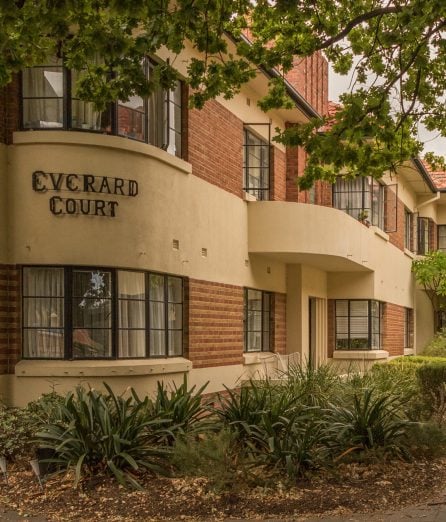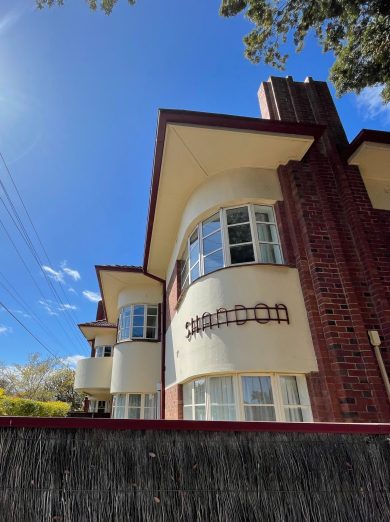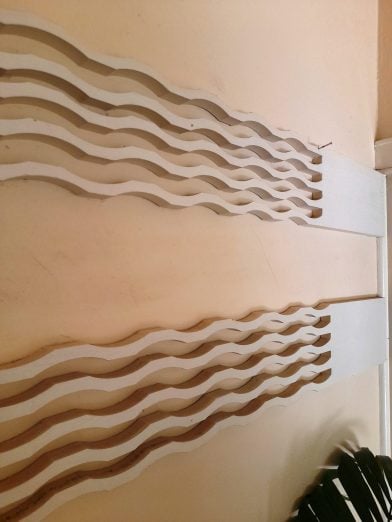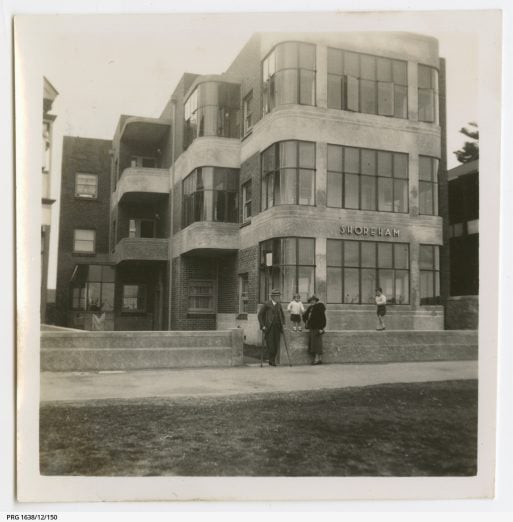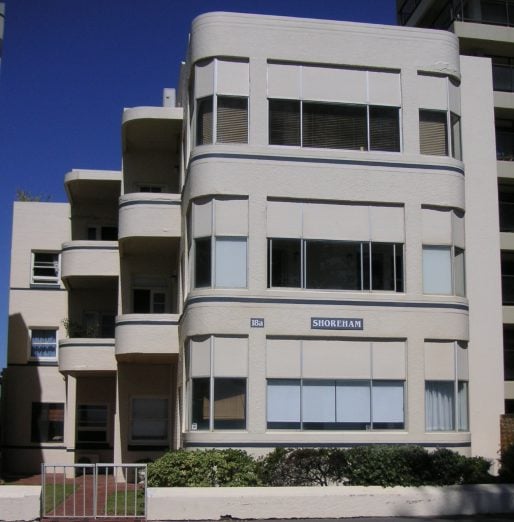When international design authority Architectural Digest named Adelaide the most beautiful city in the world, it credited sand, sea and Art Deco architecture among the reasons why, with a special mention to Semaphore. But the greatest concentration of genuine Art Deco buildings is actually found at another popular seaside suburb, writes Francine Smith, from the Art Deco & Modernism Society of South Australia, Adelaide Chapter.
Art Deco architecture in Adelaide reflects broader global trends that emerged in the 1920s and 1930s. The world was changing more rapidly than ever before. Improvements in transport, communication and building technology were matched by the pace of social change, which were symbolised in Art Deco designs with motifs of speed, power, and modernity. The great strength of reinforced concrete permitted much larger windows, often with metal framing, and cantilevered projections that appeared to have no visible support. Shop windows could now be fitted with curved glass, while pubs were often faced with Vitrolite, a form of heat-toughened glass available in a range of brilliant colours and advertised to ‘last 1000 years’. By night, neon signage added to the drama of these modern structures.
Art Deco buildings are recognisable today by their distinctive ornamentation, especially above the ground floor. Characteristic features are zigzags and chevrons. Stylized floral elements, sunbursts, or frozen fountain motifs are also common. Later in the 1930s, frontages were streamlined, with rounded corners and bands of horizontal lines (or waves in seaside locations) to convey a sense of speed and motion.
In South Australia, the earliest example of Art Deco style is the 1933 facade of the Sands and McDougall Building (King William St), designed by architect Philip Claridge in association with Lionel Gregory Bruer and Norman G. Fisher. However, it is in Glenelg that the greatest number of Art Deco buildings may be found today, with the suburb experiencing a boom in the interwar period.
Built on South Esplanade in 1938, Shoreham is a well-known although somewhat modified example. The stepped-back design of this three-storey block of flats by architect William Lucas gave each flat a wide outlook. Featuring curved, cantilevered balconies with a cantilevered canopy over the topmost balcony, curved glass in the corner windows and bands of horizontal speed lines, Shoreham had something of the streamlined style of an ocean liner heading out to sea – cruising on a luxurious ocean liner was very aspirational in the 1930s.
Nearby on Moseley Street, Shandon (1940) comprises four flats with typical Art Deco features such as the staggered ‘waterfall’ frontage with alternating bands of red brick contrasting with cream-painted render, rounded corners and curved, steel-framed windows. Shandon was commissioned by Mrs Edith Duncan, who greatly admired the Everard Court flats on Anzac Highway. Both buildings were designed by Ronald Leslie Golding, who set up the Architectural Homes Company when he was only 25. Golding had worked with his architect father, Leonard Golding, but had no formal qualifications, which has contributed to him being overlooked in the architectural world, however he is finally receiving due recognition with Everard Court added to the State Heritage Register in 2023 and Shandon in June 2024.
It would be remiss not to emphasise the rarity and importance of purpose-built interwar flats such as Shoreham and Shandon. By the end of the Great Depression building rates were not keeping pace with population growth, as is indeed the case today. Flat dwelling offered a new, convenient and thoroughly modern lifestyle. In beachside suburbs, especially Glenelg and Somerton Park, apartments also capitalised on the idea of a year-round holiday. Modern, purpose-built flats were a solution to the housing shortage. Staggered doorways ensured privacy, while insulation was fitted to assist with heat and sound issues.
When designing these modern dwellings, it is not surprising that architects turned to Art Deco, which was part of a broader trend of modernization in the city. This architectural style reflected a desire for progress and an embrace of new technologies and materials. Today, many of these buildings are preserved as heritage sites, celebrated for their historical and aesthetic value. We are fortunate that in Adelaide we can still enjoy notable examples, from cinemas and hotels to office buildings and private residences, and to know that their heritage value is now being recognised. The Art Deco and Modernism Society of Australia will continue to work to ensure these iconic buildings remain a visible part of Adelaide’s urban landscape.
Learn more
Architecture, cultural treasures, historical relevance and natural appeal were among the factors considered by Architectural Digest when it named the world’s most beautiful cities in an online article published in July 2024. To read the full story visit architecturaldigest.com/gallery/the-most-beautiful-cities-in-the-world
